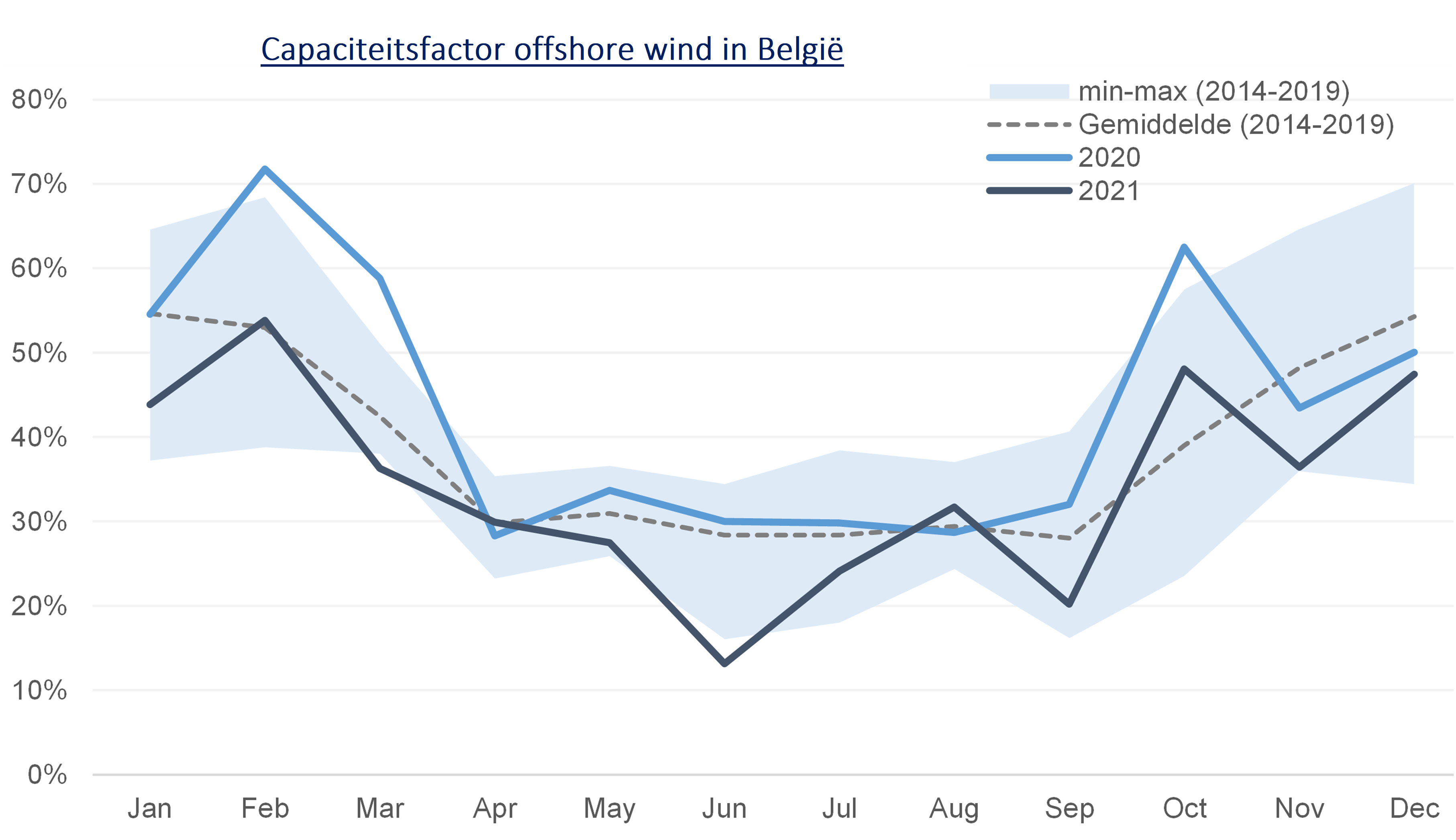Wind farms in Belgian North Sea provided green power for nearly 2 million Belgian households in 2021
04/01/2022
Offshore wind production in 2021
2021 is the first year in which the offshore wind energy zone, located between 23 and 54 km from the coast, has become fully operational. As of the end of 2020, the operational wind capacity in the Belgian North Sea amounts to 2,262 MW, which is comparable to the capacity of the two largest nuclear reactors (Doel 4 and Tihange 3) combined.
In 2021, the 399 wind turbines, spread over 9 zones, produced approximately 6.77 TWh. This corresponds to the annual electricity demand of almost 2 million households, or 8% of the total electricity demand in Belgium.
Operational wind farms result in significant CO2 savings in Belgium. For example, it is estimated that, with the current share of offshore wind energy in the energy mix, the emission of 3 million tons of CO2 is avoided every year. By way of comparison, this is the annual CO2 absorption of 3,000 km2 of forest in our climate. An area as large as East Flanders would have to be forested to create the same effect.
Seasonal production
The winter months are generally those with the highest offshore wind power generation. For example, we have observed high electricity production in February, March and April, as well as in October 2021. This seasonal peak in production often coincides with increased electricity demand in the autumn and winter months.
During the summer months of 2021, there was, as usual, less electricity generation in the North Sea. The summer period is also associated with lower electricity demand and higher electricity production from solar energy. As the graph shows, solar and wind energy are therefore very complementary.

Capacity factor offshore wind
The capacity factor, or production factor, which measures the productivity of a power plant, was 34.4% in 2021. This is lower than the average capacity factor for offshore wind in the Belgian North Sea, which is around 38%. The lower capacity factor for offshore wind in 2021 is explained by less wind supply. Lower wind speeds were measured in 2021 than in 2020.

However, the turbines were running and therefore producing electricity for about 90% of the time this year. In June, the quietest month at sea, this proportion was 79%, while in November, the turbines operated 96% of the time.
Despite the drop in wind speed, wind farms were able to slightly exceed the 2020 production record (6.73 TWh) in 2021, as the wind turbines installed in spring and autumn 2020 were for the first time operational during the full year.
The total electricity demand in Belgium in 2021 was 84.4 TWh. After the decrease in electricity consumption in 2020, it is again close to the 2019 level (84.9 TWh).
Offshore wind energy covered 8% of the total electricity consumption of Belgium in 2021. Only Denmark (18%) and the United Kingdom (14%) have a higher share of offshore wind energy in their electricity mix. Belgium is therefore in the top 3 in Europe in terms of the share of offshore wind energy in the electricity mix.
Forecasts for 2022
In 2022, there will be no new wind farms in the Belgian North Sea.
The federal government is working on an amendment to the legislative framework for the tender for up to 3.5 GW of additional offshore wind capacity in the new offshore wind zone, the Princess Elisabeth area. When these new wind farms can become fully operational depends on the federal government for the legislation surrounding the tender procedure, and on the grid operator that must be able to guarantee the connection to the onshore grid.
According to the current planning, the announcement of the winners of the tender is expected in 2024 and 2026. The first wind farm with a capacity of 700 MW could be connected by the end of 2026. The following farms could be connected from the beginning of 2028.